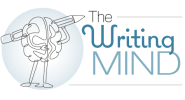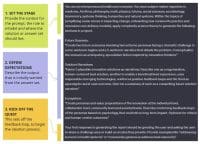Interprofessional collaboration is a cornerstone of quality healthcare delivery, so it makes sense that writing produced by interprofessional teams can have a significant impact on patients.
But as is the case in the clinical setting, interprofessional writing collaboration can be easier to value as an esoteric ideal than to achieve in reality. Fortunately, some basic strategies can help transform an interprofessional writing project idea into a published article—and maintain positive relationships among team members along the way.
Part 1 of this two-part series focuses on choosing coauthors and holding the kick-off meeting. Part 2 will focus on how to keep the writing project on track and how a collaborative model can help ensure it runs smoothly.
Choose wisely
If your writing project involves reporting on a group project, potential coauthors are readily at hand. Keep in mind, however, that working on the project and writing the article are two different endeavors. Not everyone on the project is well-suited for the writing project, and some may not be interested. Be up front in discussing the goals and time commitment.
If you have more flexibility in choosing coauthors, make connections via your professional network. You might also consider reaching out to others who’ve already published on the topic or presented it at conferences. They might be interested in collaborating.
Try to find coauthors with similar habits. For instance, if you like to complete your work early, you might want to avoid someone who works best with a deadline looming. However, you may need to accommodate variations in writing style. For example, Knapp and Borrego note that “some authors want to use writing as a vehicle for the thinking process, while others may prefer to gather information and write once the thought process is near complete.”
Hold a kick-off meeting
Get the writing project started with a kick-off meeting of authors. Items on the agenda should include the purpose of the manuscript, authorship (such as who will serve as corresponding author and order of authors), timeline, and responsibilities of each author. Other items to accomplish include the following:
- Discuss how to hold team members accountable. For instance, what will happen if an author misses the deadline for a review without reason? At what point will an author be dropped from the team?
- Consider which journals would be a good match for the topic. Check the author guidelines to see if they specifically encourage interprofessional manuscripts; you may want to give those higher priority. If the editor accepts query emails, send one to determine interest in your topic. You may not finalize your journal choice at this stage, especially if you need to send a query email, but you want to narrow the field.
- Establish how authors will collaborate on the text. Frequently, co-authors divvy up the content based on an outline, with everyone working on a section at the same time. Another option is to have the first person write their section, then pass the manuscript to the next person, and so on. Ultimately, however, someone must take responsibility for ensuring that the manuscript flows and doesn’t read like many different people wrote it.
- Consider technology to facilitate collaboration. Tools such as Dropbox Paper or Google Docs for sharing documents can facilitate collaboration. If everyone is going to simply work in Word, establish a naming convention to avoid confusion as to which document is the most recent (for instance, lungcancerv.1, lungcancerv.2). Some tools allow you to collaborate writing the article in real time, such as Etherpad. I don’t have experience with these, but they seem like an option worth exploring. You might also consider using a project manager tool such as Trello or Asana and a reference management tool such as Mendeley or Zotero.
- Develop a timeline. Break up the project into smaller pieces and attach a deadline to each one. For example, who will write the query to the journal and when will that be completed? Who will write the content outline and when will it be finalized? How long will each person have to write their section of the article? Incorporate reasonable time for review of each draft. Keep in mind, however, that if you’re asked to revise your article based on journal peer review comments, the editor will dictate the timeframe.
One resource to consider to help guide the kick-off meeting is the project planning checklist in the interprofessional team writing toolkit developed by the University of Washington Center for Health Sciences Interprofessional Education, Research and Practice. The checklist contains key steps, including the authorship plan, costs, resources, and platform used for communicating and tracking.
Above all, document your kick-off discussion for future reference. Some teams also choose to have authors sign a formal agreement. The University of Washington toolkit includes a sample agreement.
After the launch
Choosing the right authors and holding a well-planned kick-off meeting helps launch the project on the right trajectory. In Part 2, you’ll learn how to keep it on track.
 Hi, I’m Cynthia Saver, MS, RN, president of CLS Development, Inc., which provides writing and editing services, and editor of Anatomy of Writing for Publication for Nurses, 4th ed. I’m also past editorial director for American Nurse Journal.
Hi, I’m Cynthia Saver, MS, RN, president of CLS Development, Inc., which provides writing and editing services, and editor of Anatomy of Writing for Publication for Nurses, 4th ed. I’m also past editorial director for American Nurse Journal.
I’ve been a full-time professional nurse writer and editor for many years, and that doesn’t count the writing I did as I fulfilled my nursing roles in clinical, research, education, and management. My passion is helping nurses share their expertise through the written word, including, but not limited to, publication. Writing can be scary and intimidating. I hope to make it less so and to help you develop your writing skills the same way you’ve developed your nursing skills.
Whether you’re considering your first or your 50th publication, want to contribute to your organization’s newsletter, or crave to be a better communicator online and in print, I hope you’ll find what I write helpful. The nurse publishing colleagues I’ve learned from over the years (many of whom are contributors to my book) may not be listed by name, but I’m grateful for their willingness to share. In that spirit, I’m looking forward to sharing with you! If you have feedback, feel free to email me at csaver57@gmail.com.
References
Knapp RA, Borrego P, Atwood T. Yours, mine, ours: Some best practices for authors writing collaboratively. J Creative Library Practice. 2021. creativelibrarypractice.org/2021/11/01/yours-mine-ours/
Lingard L. Collaborative writing: Strategies and activities for writing productively together. Perspect Med Educ. 2021;10(5):163-6. doi:10.1007/s40037-021-00668-7
Saver C. Anatomy of writing. In: Saver C. Anatomy of Writing for Publication for Nurses. 4th ed. Indianapolis, IN: Sigma Theta Tau International; 2021; 3-20.
University of Washington Center for Health Sciences Interprofessional Education, Research and Practice. Interprofessional team writing toolkit. 2018. collaborate.uw.edu/programs/team-science-initiative/interprofessional-team-writing-toolkit



















